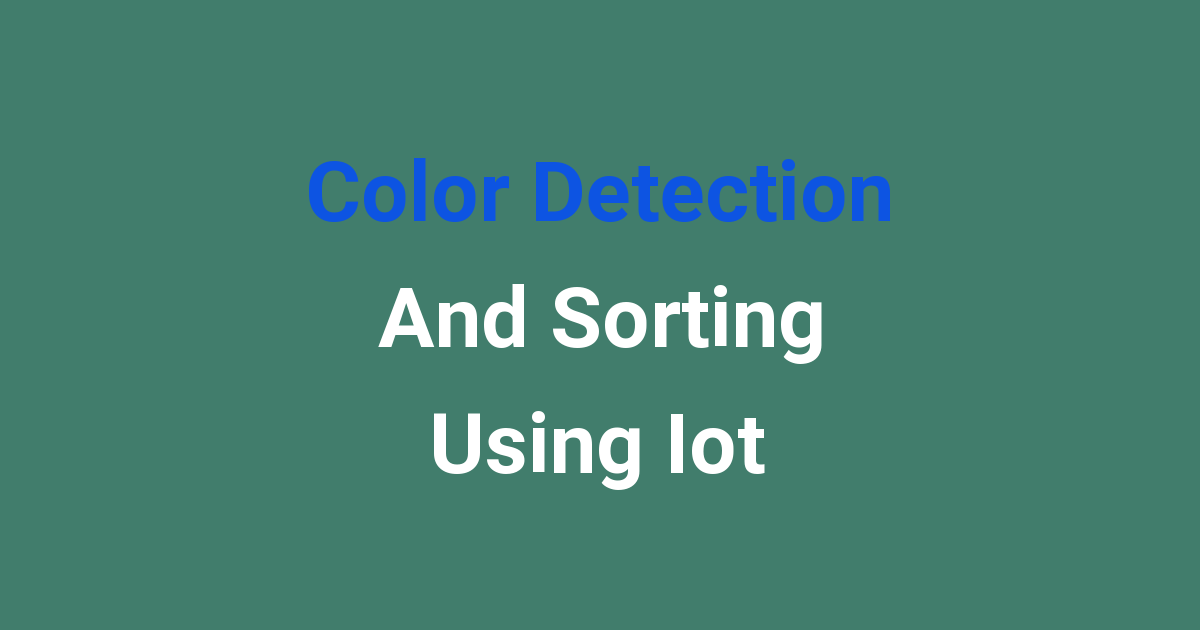Using IoT technology, we can identify and categorize colors automatically.
Color Detection and Sorting using IoT
Introduction
In today’s advanced technology era, the Internet of Things (IoT) has become a game-changer in various industries, including manufacturing and agriculture. One of the key applications of IoT is color detection and sorting. Color detection and sorting play a vital role in industries, especially in the manufacturing of products where the quality and accuracy of color are crucial. Implementing IoT in color detection and sorting processes can provide efficiency, accuracy, and automation to the industry.
Problem Statement
The traditional color detection and sorting methods are manual and labor-intensive, which are prone to errors and inconsistencies. The reliance on human operators can lead to inefficiencies and inaccuracies, impacting the overall productivity and quality of the products. Therefore, there is a need to develop a more automated and efficient system using IoT technology to address these challenges.
Existing System
The existing color detection and sorting system relies heavily on human operators to visually inspect and sort products based on color. This manual process is time-consuming, labor-intensive, and prone to errors. The traditional systems are not efficient in handling large volumes of products, leading to delays in production and increased costs. Moreover, the manual sorting process is subjective, as it relies on the perception of individual operators, which can lead to inconsistencies in color detection and sorting.
Disadvantages
1. Manual and labor-intensive process.
2. Prone to errors and inconsistencies.
3. Inefficient in handling large volumes of products.
4. Subjective color detection and sorting.
5. Increases production costs and delays.
Proposed System
The proposed system aims to revolutionize the color detection and sorting process by integrating IoT technology. The IoT-based color detection and sorting system will leverage sensors and actuators to automate the color detection and sorting process. By using IoT devices, such as cameras and color sensors, the system can accurately detect and sort products based on color in real-time. The data collected from the sensors will be processed and analyzed by a central server, which will control the actuators to sort the products accordingly.
Advantages
1. Automation of the color detection and sorting process.
2. Improved accuracy and efficiency.
3. Real-time color detection and sorting.
4. Reduction in errors and inconsistencies.
5. Cost-effective and time-saving solution.
Features
1. IoT devices such as cameras and color sensors for color detection.
2. Central server for processing and analyzing the data.
3. Actuators for sorting the products based on color.
4. Real-time monitoring and control of the sorting process.
5. User-friendly interface for easy operation and customization.
Conclusion
In conclusion, the implementation of IoT technology in color detection and sorting processes can significantly enhance the efficiency, accuracy, and automation of the industry. The proposed system offers a cost-effective and time-saving solution to the existing challenges faced by traditional color detection and sorting methods. By leveraging IoT devices and central servers, the system can revolutionize the way products are sorted based on color, leading to improved productivity and quality in manufacturing industries. Overall, the IoT-based color detection and sorting system presents a promising future for the industry.

